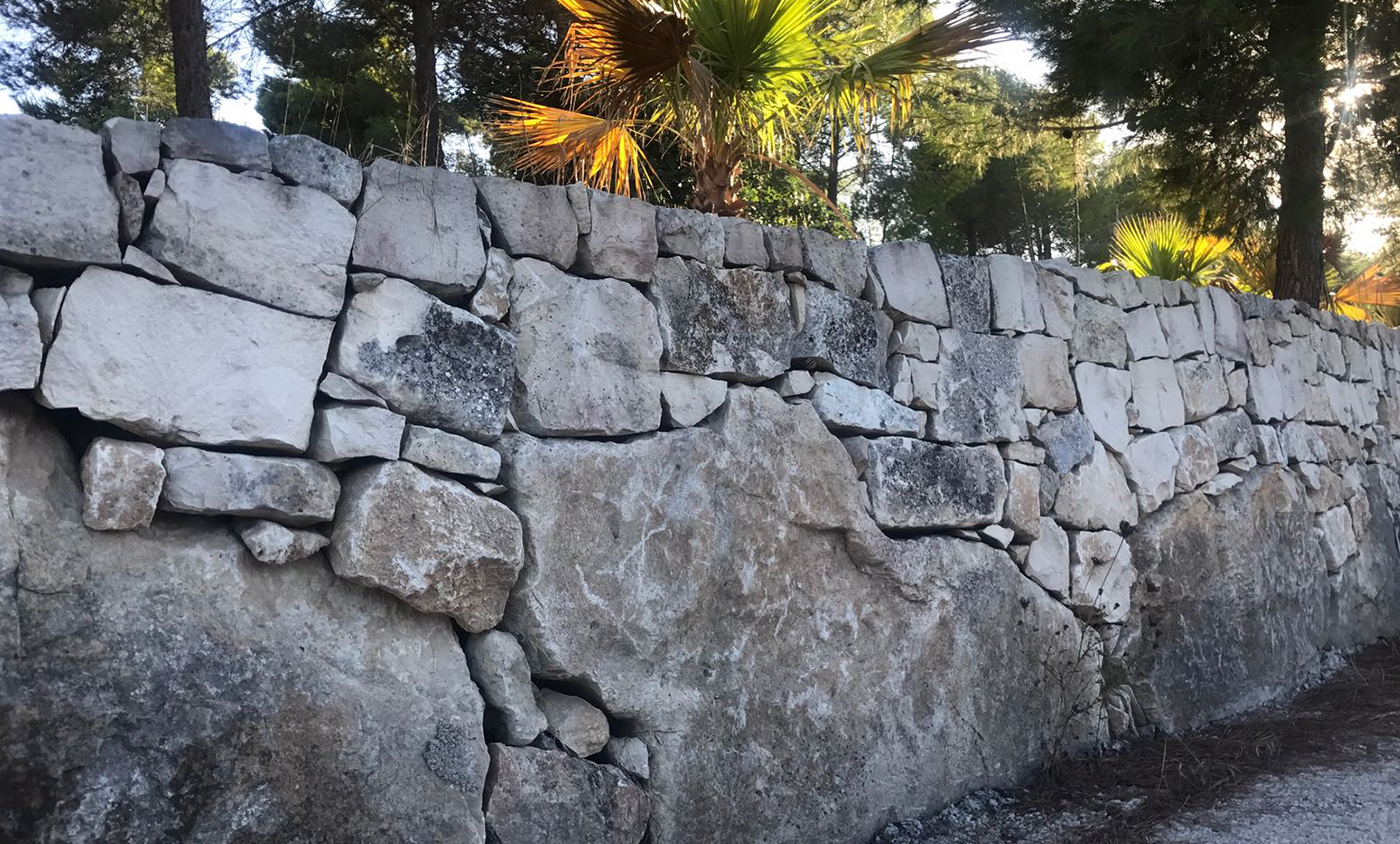The charm of dry stone walls
The charm of dry stone walls, the colour of the stones and their environmental impact are unique. Dry stone walls are long chains of stones put together without the use of any mortar or binder. To build dry stone wall, great strength, professionalism and patience is required to give stability and beauty, allowing you to return to the past and old traditions.
The effort of building a dry stone wall, if well done, will be rewarded with its charm and beauty.
The fundamental element.
Gravity is definitely the fundamental element in a dry stone wall, in fact each stone must occupy its place and it is thanks to gravity that it remains stable.
The technique
Dry stone walls are built through a long and complex process, using local limestone, dry mounted and crossed.
After carefully choosing the stones, placing them very carefully in a layered structure, it is possible to get a perfect self-supporting wall, which will remain so for centuries, making a sort of embroidery for the landscape. There are two very similar types of dry stone wall: Ragusa dry stone wall and Modica dry stone wall
The art of stone
Modica stone takes its name from the city of Modica. It is a limestone rock extracted in the area of the Hyblean Mountains in Sicily and it is sought after all over the world. The best quality variety is called Latin Stone of Modica, and it is characterized by a greater presence of quartz, which makes it more resistant and very similar to marble during the process of sanding and polishing. The stone is found directly under a layer of earth in the countryside of the county of Modica. It has bright light colours from greyish white to beige, but it is the quartz veins, perpendicular to stratification and similar to breakages, that give the stone a particular charm.


